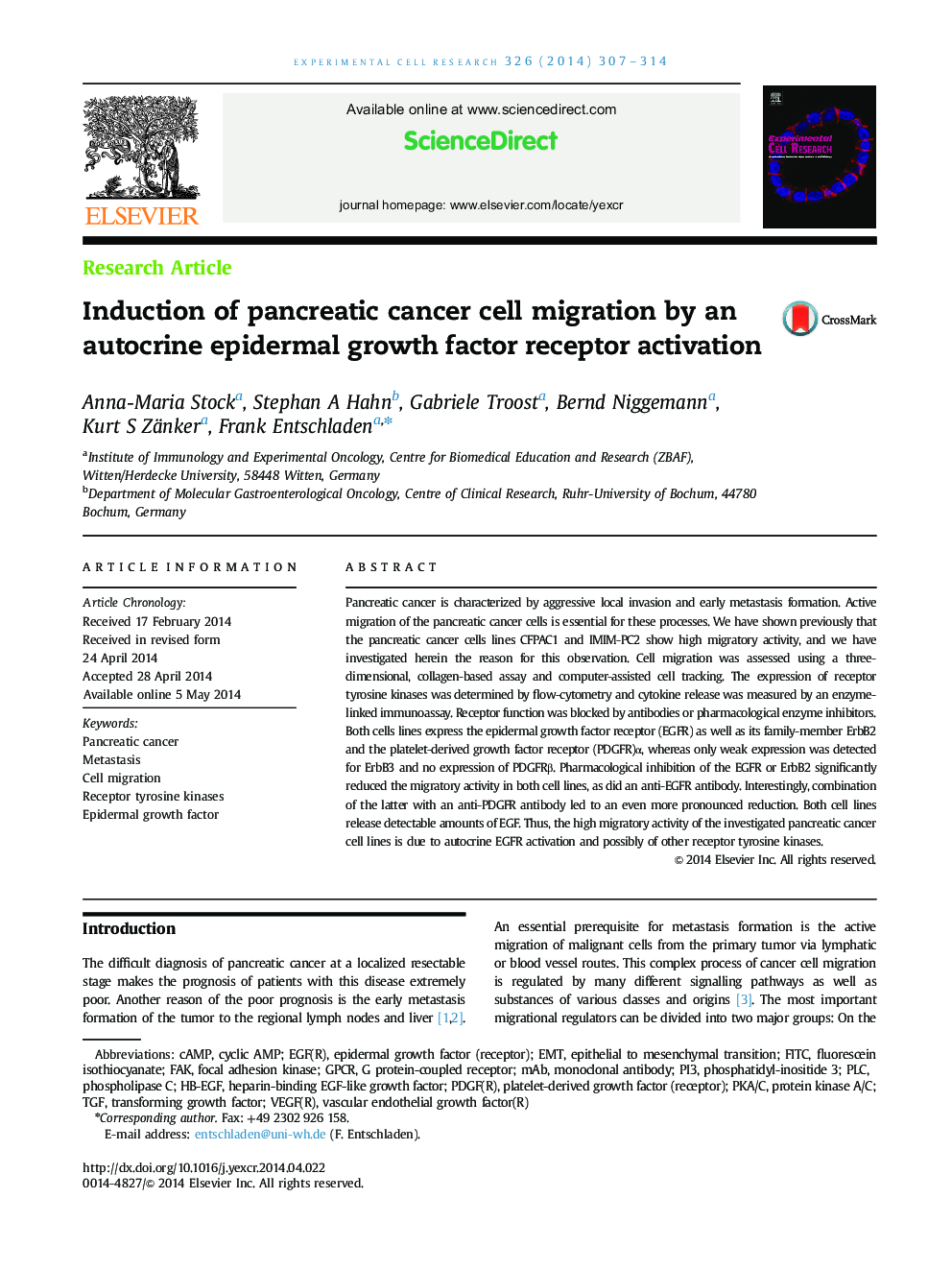| Article ID | Journal | Published Year | Pages | File Type |
|---|---|---|---|---|
| 2130234 | Experimental Cell Research | 2014 | 8 Pages |
•Investigated pancreatic carcinoma cells display high spontaneous migratory activity.•High migratory activity is due to autocrine activation of receptor tyrosine kinases.•Interruption of autocrine activation significantly reduces migratory activity.
Pancreatic cancer is characterized by aggressive local invasion and early metastasis formation. Active migration of the pancreatic cancer cells is essential for these processes. We have shown previously that the pancreatic cancer cells lines CFPAC1 and IMIM-PC2 show high migratory activity, and we have investigated herein the reason for this observation. Cell migration was assessed using a three-dimensional, collagen-based assay and computer-assisted cell tracking. The expression of receptor tyrosine kinases was determined by flow-cytometry and cytokine release was measured by an enzyme-linked immunoassay. Receptor function was blocked by antibodies or pharmacological enzyme inhibitors. Both cells lines express the epidermal growth factor receptor (EGFR) as well as its family-member ErbB2 and the platelet-derived growth factor receptor (PDGFR)α, whereas only weak expression was detected for ErbB3 and no expression of PDGFRβ. Pharmacological inhibition of the EGFR or ErbB2 significantly reduced the migratory activity in both cell lines, as did an anti-EGFR antibody. Interestingly, combination of the latter with an anti-PDGFR antibody led to an even more pronounced reduction. Both cell lines release detectable amounts of EGF. Thus, the high migratory activity of the investigated pancreatic cancer cell lines is due to autocrine EGFR activation and possibly of other receptor tyrosine kinases.
